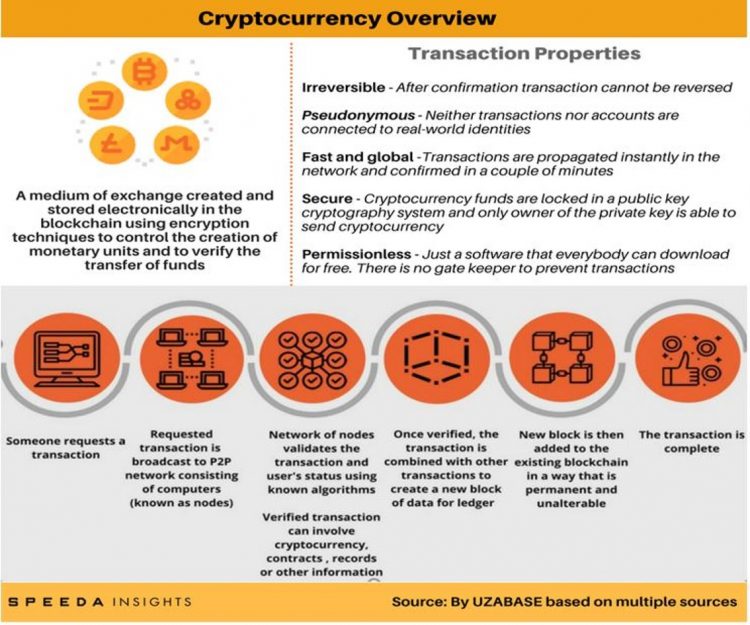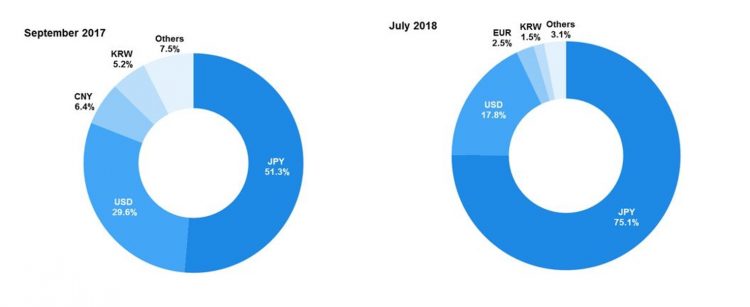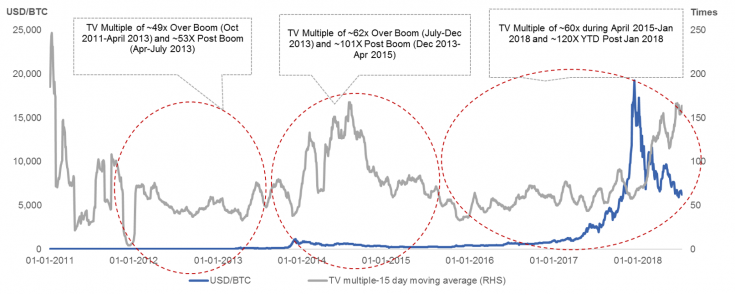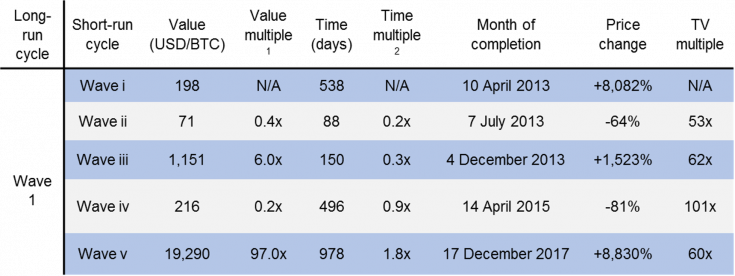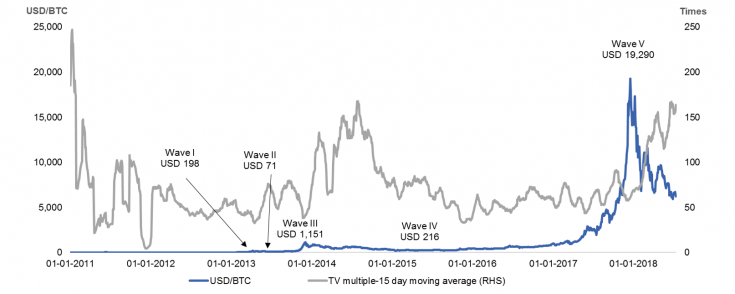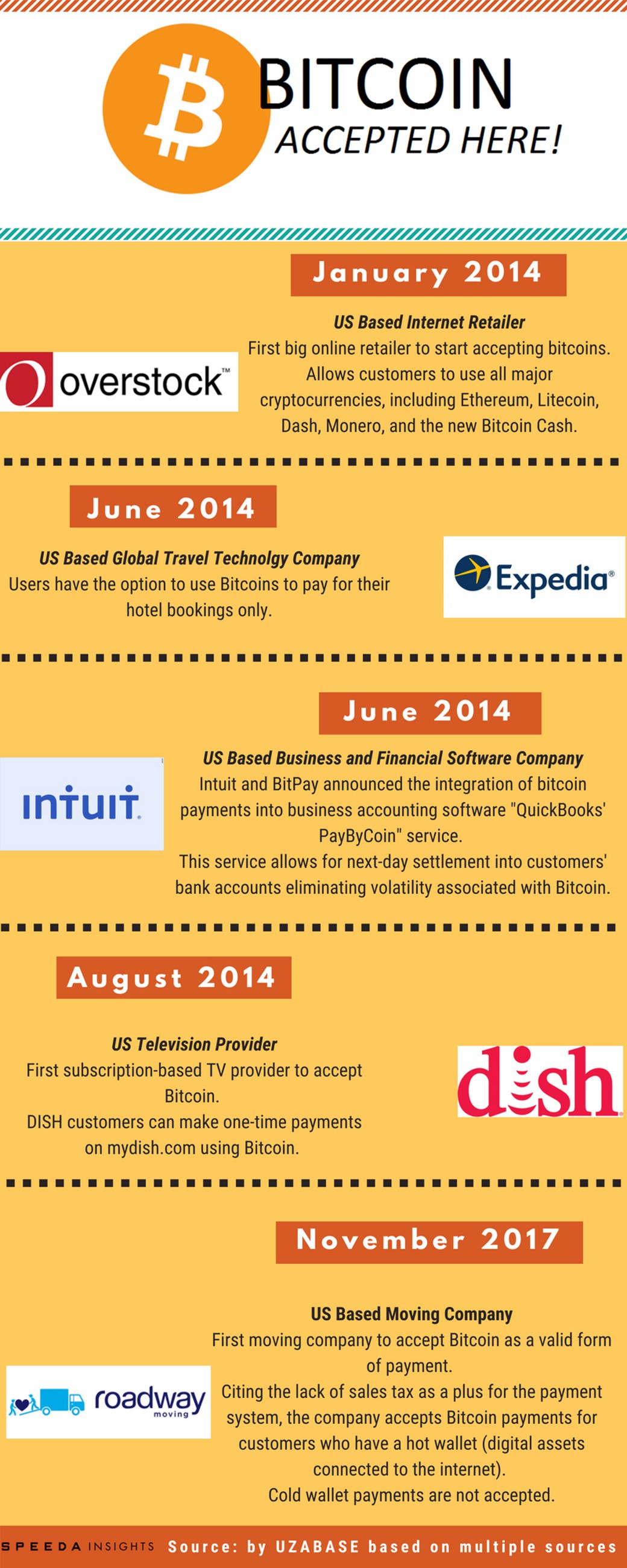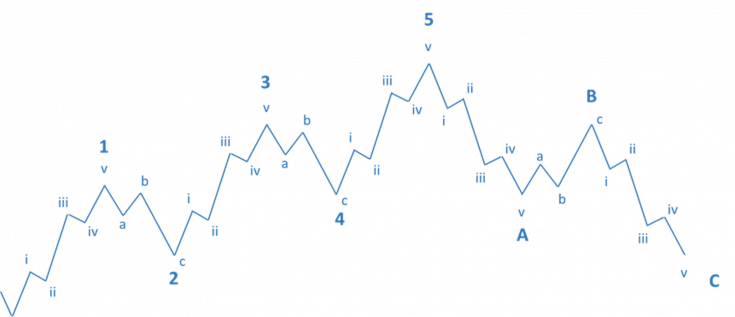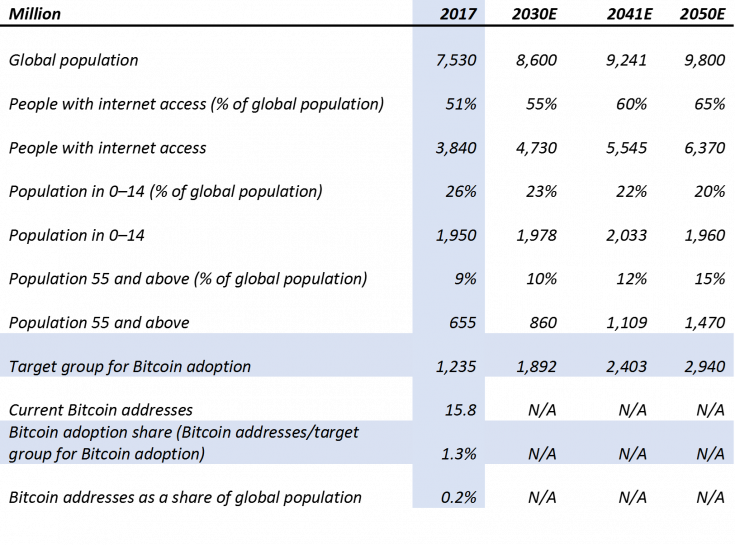Cryptocurrency Adoption: Will Bitcoin Ever Be Mainstream?
| A lack of government regulation could be a key factor behind the exponential growth in Bitcoin and other cryptocurrencies over less than a decade — the industry approached USD 613 billion at the end of 2017. However, since late 2017, this explosion in value has drawn attention from regulators around the world, especially in Asia, amidst rising price manipulations, hacking attacks, and fraud. |
|
An early adopter of cryptocurrency, Japan continues to cement its position as a globally leading cryptocurrency market (accounting for about 75% of all currencies traded into Bitcoin as of July 2018). Meanwhile, South Korea (2%) and China (0.06%) are reigning the industry in either through tighter regulatory oversight or by banning cryptocurrencies altogether. Japan’s dominance has won Asia the lead in the global cryptocurrency market: the region accounts for about 77% of all currencies traded into Bitcoin as of July 2018, up from 65% in September 2017. Given that the cryptocurrency market is driven by speculative demand, drastic policy changes strongly impact short-term direction. News of upcoming regulatory changes has resulted in an approximately 56% YTD loss of value in the global cryptocurrency market, following its exponential growth (34.5x) in 2017. Bitcoin alone saw prices fall by around 68% to USD 6,244 as of 14 July 2018 (translating into a decline of about 74% in total market capitalisation over the period), after peaking at USD 19,290 on 17 December 2017. However, we believe that these regulations could lead to a more stable market in the future, resulting in price corrections over the medium term. Our analysis based on the Elliot Wave Theory places Bitcoin closer to USD 112,000 by September 2020E, indicating approximately 16x growth over 2018–20E. Assuming a TV multiple of 50–70x (the historical TV multiple during the boom cycle) and daily transaction value CAGR of 80%–100% (in line with historical CAGR) over 2018–20E Bitcoin prices should reach USD 73,000–137,000 over the period further supporting our price estimate. Although the spotlight on it has intensified, Bitcoin will remain in infancy as a medium of exchange due to its high volatility, cost, and a capacity bottleneck, all of which lead to speculator trading rather than use as an everyday payment option. With an adoption rate of 1.3% as of July 2018, the number of Bitcoin users should grow at a CAGR of 23.3% over 2018-2041E, during which period Bitcoin supply should peak. Bitcoin users as a share of the global population should therefore approach 26% by 2041E, up from around just 0.2% in 2017, making mass adoption highly unlikely. |
|
Asia Takes Lead in Cryptocurrency Regulation; Japan Gains Ground as the Largest Bitcoin Market, Supported by Tightening Regulations in China and South Korea The global cryptocurrency market faced extreme price fluctuations in 2018, in contrast to a mostly upward price trajectory since its emergence in 2009 until the end of 2017. The initial boom in cryptocurrencies occurred in an unregulated market, and regulators and international participants have since remained largely distant from the action. This environment has in turn allowed prices of Bitcoin and other contemporary digital currencies to soar. The global cryptocurrency market’s capitalisation grew exponentially (around 57x) over 2014–18, peaking at USD 612.9 billion on 1 January 2018 versus just USD 10.7 billion on 1 January 2014. However, as a medium of exchange, cryptocurrency remains in its infancy, capturing just 1.4% of the global narrow money supply (around USD 43 trillion) and around 8% of the world’s total gold investments of USD 7.7 trillion as of end-2017. In late 2017, regulatory bodies took long-awaited steps towards intervention in a cryptocurrency market that faced rising price manipulations, hacking attacks, fraud, and money laundering. Increased government intervention was further supported by considerable growth in ‘initial coin offerings’ (ICO – an unregulated method of raising funds for new cryptocurrency ventures) by blockchain companies in 2017. In total, ICOs raised over USD 5 billion through nearly 800 deals in 2017, 5.0x equity investors’ funding into blockchain companies (USD 1 billion in 215 deals) in 2017 and 7.3x the funding ICOs raised (USD 0.68 billion) in 2016. While many countries including the USA and Europe have continued to mull on an appropriate response, Asia has taken the lead in regulating cryptocurrency markets. This is likely due to the region’s wide adoption of cryptocurrencies, despite the varying response around the world. Asia remains the leader in the global cryptocurrency market, accounting for around 77% of all currencies traded into Bitcoin, the dominant cryptocurrency (about 47% of total cryptocurrency market capitalisation) as of July 2018, up from 65% in September 2017, followed by the USA (about 18%, down from 30%) and Europe (around 3%, down from 4%). Asia’s dominance is supported by continuing market leadership by Japan, which accounted for about 75% of all currencies traded into Bitcoin as of July 2018, up from 51% in September 2017. While Japan has been an early adopter of digital currencies, China and South Korea have proactively regulated cryptocurrency markets by banning ICOs, closing cryptocurrency exchanges, and implementing regulations that are set to outlaw anonymous trading amidst rising concerns about fraud. As a result, South Korea, the fourth-largest cryptocurrency market during the period lost its share to about 2% from about 5% previously. China’s share deteriorated to just 0.06% from 6.4% previously, causing the country to lose its position as the third-largest cryptocurrency market by September 2017. Japan’s continued dominance is attributable to a surge in the trading volume of the Japanese Bitcoin exchange market on the back of the exit of Bitcoin traders in China and South Korea.
Altcoins Gained Ground in Cryptocurrency Market over 2013–18
Source: Created by UZABASE based on coinmarketcap.com
Note: Shares calculated in terms of market capitalisation
  Bitcoin Prices Hit by Regulatory Pressure from China and South Korea
Source: Created by UZABASE based on various materials
Japanese Yen Continues to be the Most Traded National Currency for Bitcoin
Source: Created by UZABASE based on various materials |
|
Bitcoin Prices Have Fallen Significantly Amidst Rising Uncertainty; Market to See Price Correction After December 2018 Increased pressure from government regulations has significantly impacted the global cryptocurrency market. Market value fell about 56% YTD 14 July 2018 to USD 248.6 billion, after growing exponentially (34.5x) in 2017. The price of Bitcoin fell about 68% to USD 6,244 as of 14 July 2018, after peaking at USD 19,290 on 17 December 2017; the decline accounted for about 74% of the loss of total market capitalisation over the period. This followed a mostly upward trajectory since early 2011, during which Bitcoin reached parity with the US dollar (USD 1 = BTC 1) after its introduction in 2009. Consequently, the Bitcoin transaction value (TV) multiple — the ratio of Bitcoin market capitalisation to its daily transaction value — averaged around 120x during its declining phase, with less than 1% of the overall wealth in Bitcoin actively used for transactions. Bitcoin experienced four notable peaks over nine years of circulation (in June 2011, April 2013, December 2013, and December 2017). The currency has traded at a TV multiple of 50–70x during these boom cycles (with about 2% of wealth transacted daily); the multiple exceeded 100x during the post-boom period. Thus, the recent decline in Bitcoin prices (on the back of government intervention) implies inactive transaction demand due to heightened uncertainty. Bitcoin Trades at TV Multiple of More than ~100x Post Peak in January 2018
Source: Created by UZABASE based on blockchain.com
Cryptocurrency values remain heavily tied to speculation and optimism (70% of Bitcoin price reaction is driven by speculators). Drastic policy changes therefore severely impact short-term direction. However, the long-term impact is slightly softer, as many new regulations are only months old and could even lead to a more stable market in the future. Our analysis based on the Elliot Wave Theory (which is based on the notion that cycles are repetitive and that short-run cycles are essentially fractals of long-run cycles) indicates that Bitcoin prices could reach USD 6,900 by December 2018E (wave 2), down by about 64% from its peak in December 2017 (wave 1), but up approximately 11% from the current price of USD 6,244. Our analysis puts Bitcoin prices closer to USD 112,000 by September 2020E (wave 3), indicating around 16x growth over the two-year period. Assuming a TV multiple of 50–70x (the historical TV multiple during the boom cycle) and daily transaction value CAGR of 80%–100% (in line with historical CAGR) over 2018–20E Bitcoin prices should reach USD 73,000–137,000 over the period further supporting our price estimate. We believe this price target is achievable over the medium term, once the market corrects itself from the temporary fall caused by the pressure of government regulations. However, the Elliot Wave Theory places Bitcoin prices closer to USD 1.9 million by July 2037E, which we believe to be highly unrealistic. The limitation of the model is its basis only on a single short-run wave, rather than on average fractal multiples of several short-run waves. Using a longer time period and multiple short-run waves should make the analysis more representative. Elliot Wave Theory: Breakdown of Long-Run Wave 1
b
Source: Forecasted and created by UZABASE based on blockchain.com
Note: Impulse waves are highlighted in blue and correction waves are highlighted in grey
1Value multiple for impulse waves = value of the wave divided by value of wave (i), rounded off to the nearest whole number
1Value multiple for correction waves = value of the wave divided by value of the preceding wave, rounded off to the nearest 0.1
2Time multiple = time taken for the wave divided by time taken for wave (i), rounded off to the nearest 50 days
Long-Run Cycle: Forecast
bb
Source: Forecasted and created by UZABASE based on blockchain.com
Impulse waves are highlighted in blue and correction waves are highlighted in grey. Unrealistic estimates are highlighted in dark blue
1Projected value = value of the wave (1) multiplied by the value multiple of the respective short-run wave
2Projected time = time taken for wave (1) multiplied by the time multiple of the respective short-run wave
Scenario Analysis: Bitcoin Price Would Reach Between USD 73,000–137,000 by 2020E at a TV Multiple of 50–70 and Daily Transaction Value Growth of 80%–100%  Source: Forecasted by UZABASE based on blockchain.com |
|
Inherent Volatility and Capacity Bottlenecks Hinder Mass Adoption of Bitcoin As of July 2018, there were 21.7 million Bitcoin addresses globally, forming only about 1.8% of the target group for Bitcoin adoption (the target group represents 16.4% of the global population and excludes people without internet access and those in the age groups of 0–14 and 65 and above). This was under the assumption that one address holds only one Bitcoin, although this seems a highly conservative number (one person usually owns more than one Bitcoin address). It is estimated that 25% of Bitcoin mined so far has been lost during improper handling and storage by Bitcoin owners, and this lowers the number of addresses to 16.3 million (about 1.3% of the target market). Bitcoin addresses holding more than one Bitcoin accounted for around just 3% of total Bitcoin addresses, while about 96% of total Bitcoin in circulation was distributed among this niche segment. The number of Bitcoin addresses holding less than one Bitcoin therefore amounted to 15.8 million as of July 2018, indicating a Bitcoin adoption rate of just 1.3%. As per our analysis (elaborated in the Appendix of this report), the target group for Bitcoin should reach 2.4 billion in 2041E (during which Bitcoin supply should peak), after growing at a CAGR of 2.8% over 2017–41E. In order to achieve 100% Bitcoin adoption by 2041E, the number of Bitcoin users should grow at a CAGR of 23.3% over this period. This should bring Bitcoin users as a share of the global population to around 26% by 2041E, up from just 0.2% in 2017. Despite this increase in adoption, we believe that a shift to cryptocurrencies from fiat currencies is highly unlikely, given the following factors. High Price Volatility Makes Cryptocurrency an Investment Option Rather than a Payment Mode for Goods A currency should provide the three functions listed below: • Store of value: Maintains its value without significant fluctuations • Medium of exchange: Be accepted by buyers and sellers to facilitate the trade of goods and services without bartering • Unit of account: The currency should be countable, divisible, and fungible Cryptocurrencies cannot be considered a currency, as they fulfil only the third function (that of being a unit of account) but are weak in the other two functions. Digital currencies, similar to gold, have a fixed supply. For instance, the number of Bitcoins that can ever be mined is capped at 21 million, and only about 81% (17 million) of this have been in circulation so far (as of 2Q2018). The Bitcoin network is designed in a way that mining becomes tougher as the supply reaches its cap value. By current estimates, the last Bitcoin will be mined in 2041E, making Bitcoin both rare and finite. However, like any other fiat currency, Bitcoins are divisible; the lowest indivisible unit in the Bitcoin system is 1 satoshi, which is a one hundred-millionth part of a Bitcoin. US cents (the lowest indivisible unit of the US dollar) currently in circulation (including cash, money market funds, savings accounts, and CDs) amount to 1.05 quadrillion US cents, i.e. less than the 1.6 quadrillion satoshi currently in circulation. Despite adequate supply, one of the key barriers to the wide adoption of cryptocurrencies is high price volatility, which has hindered its acceptance as an everyday payment option. Mainstream consumers see it as a form of money too unstable to trust; they therefore use it as an investment vehicle rather than as an exchange for goods. Furthermore, only a few retailers accept Bitcoin as a payment for goods and services (only for limited items), including just a handful of top retailers such as DISH Network, Intuit, Paypal, and Overstock, possibly due to slower user adoption. Microsoft, an early adopter of Bitcoin, removed its Bitcoin payment option from its active payment options in January 2018, mainly due to volatility and risk associated with Bitcoin. Bitcoin has less than 20 million users in the world after nearly nine years in circulation; in contrast, PayPal — an online payment system that serves as an alternative to traditional money — reached nearly 149 million active users in its first nine years up to 2008, when the number of internet users worldwide was just over 1 billion (versus nearly 4 billion today). At the end of 2017, there were 1.6 billion mobile wallet users globally, about 80x the number of Bitcoin users.
Transaction Capacity and High Transaction Cost Are Key Bottlenecks Transaction capacity is dictated by maximum block size (the collection of transactions over approximately a ten-minute period), which equals one megabyte (MB). This limit on the size of blocks translates into a maximum of three to seven transactions per second. This is significantly low compared with existing money systems such as cash, which has an effectively infinite capacity, and Visa/Mastercard, which can process tens of thousands of transactions per second. This has led to the emergence of new altcoins with better security and transaction speed. An example of this is Bitcoin Cash, an altcoin created via a Bitcoin hard fork in early August 2017. Bitcoin Cash can process 8x more transactions per day than Bitcoin. Although Bitcoin Cash did not gain the momentum anticipated (it fell about 40% since the fork), around USD 5 billion in value moved out from Bitcoin as a result of the fork. Two proposals are under discussion to increase the transaction capacity of Bitcoin: ‘SegWit’ (optimises the code in a way that should make transactions smaller and uses other various techniques to increase Bitcoin transaction volume) and ‘Bitcoin Unlimited’ (increases the block size limit to whatever is needed [initially 2MB] in order to expedite confirmations on the network); however, both remain unconfirmed. Explicit transaction cost for Bitcoin remains relatively high. Until the beginning of 2017, Bitcoin fees tended to be well below USD 1 and were often less than USD 0.10, i.e. significantly lower than the fees merchants paid to accept credit card payments. However, with Bitcoin’s popularity outstripping the network’s ability to cope with growing demand, average transaction fees paid by merchants have tended to rise; the fee now stands at around USD 28 per transaction. This has made companies shift to alternative networks, as it is unviable to support small transactions when each transaction costs more than USD 20. For instance, video game giant Steam (USA) announced in December 2017 that it would stop accepting bitcoin payments, citing skyrocketing transaction fees. Also in December 2017, Bitpay, a US-based bitcoin payment service provider, announced that it would begin accepting payments with Bitcoin Cash, moving away from Bitcoin. Fees on the Bitcoin Cash network averages around USD 0.25, compared with the more than USD 20 fee on the mainstream Bitcoin network.
|
|
Appendix Elliot Wave Theory: Cycles Multiply as They Come The Elliot Wave Theory is based on the notions that cycles are repetitive and that short-run cycles are essentially fractals of long-run cycles. The theory proposes a cycle of eight long-run waves. Five short-run waves (i, ii, iii, iv, and v) form long-run wave (1). As per the fractal relationship, a long-run wave is a multiple of its corresponding short-run wave. For example, short-run wave (i) is a multiple of the long-run wave (1); short-run wave (ii) is a multiple of the long-run wave (2) and so on.
Forecasts for Mass Adoption
Note: Target group for Bitcoin adoption excludes people without internet access and those in the age groups of 0–14 and 65 and above.
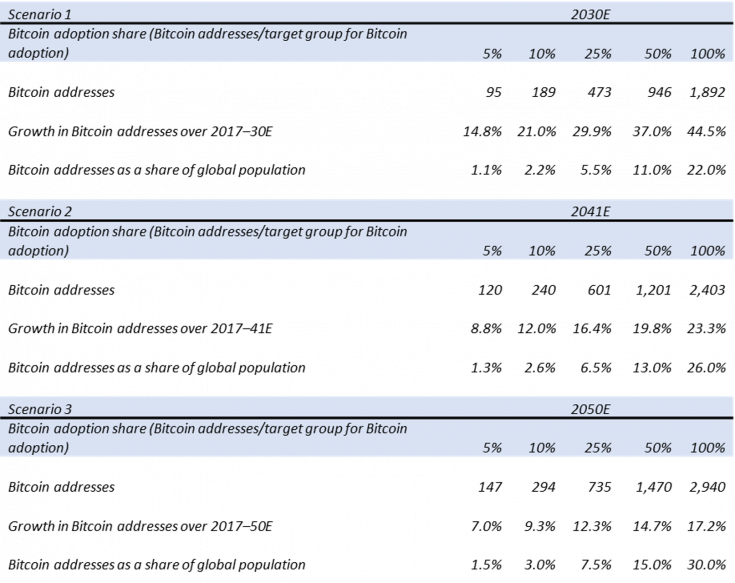 Source: Forecasted by UZABASE based on World Bank and Bitinfochart.com |




